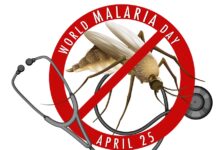A recent study has revealed that over 800 million adults globally have diabetes—almost double the number previously estimated—and more than half of those over 30 are not receiving treatment.
Published in The Lancet, the 2022 study found that approximately 828 million people aged 18 and older were living with type 1 and type 2 diabetes worldwide. Among adults over 30, 445 million, or 59%, were not receiving necessary treatment.
The World Health Organization (WHO) had previously estimated that around 422 million people suffered from diabetes, a chronic metabolic condition that, if left untreated, can damage the heart, blood vessels, nerves, and other organs.
The global diabetes rate has doubled since 1990, increasing from approximately 7% to 14%, driven largely by a rise in cases in low- and middle-income countries. Despite the increase in cases, treatment rates in these regions have shown minimal improvement, creating a widening treatment disparity compared to higher-income countries, where progress has been made.
In some parts of sub-Saharan Africa, only 5-10% of those estimated to have diabetes were receiving treatment, noted Jean Claude Mbanya, a professor at the University of Yaounde I in Cameroon. Treating diabetes, whether with insulin or medication, can be costly.
“A huge number are at risk of serious health complications,” Mbanya stated.
As reported by economictimes, the study, conducted by the NCD Risk Factor Collaboration and WHO, is the first global analysis to include diabetes rates and treatment estimates for all countries. The findings are based on more than 1,000 studies involving over 140 million participants
Diabetes was defined using common diagnostic criteria: high fasting plasma glucose levels or elevated glycated hemoglobin, as well as those taking diabetes medication. Both tests were employed to avoid underestimating cases, especially in regions like South Asia, where relying solely on fasting plasma glucose could miss diagnoses.
While the study did not differentiate between type 1 and type 2 diabetes, prior evidence indicates that most adult cases are type 2, often associated with obesity and poor diet.























